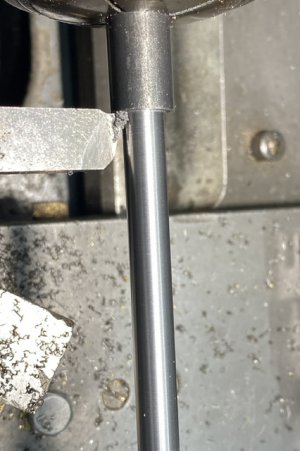- Joined
- Feb 21, 2022
- Messages
- 771
With those parameters a very small tip radius will work better than a larger one.The point of my exercise was not to polish 1018. It was to machine to tolerance with an acceptable finish for the intended purpose. In the past I've done all of the fixes for smoothing 1018 and until now my specially ground HSS bits did a decent job. I was trying to get a 12L14-like finish with the 1018. Since the fit between the saw blade, the cap and the body of the arbor were critical dimensions they all had to be machined and not hand finished.
Just to clarify, this was an EXPERIMENT to see what I could accomplish with 1018. I'm not a beginner. I wasn't asking how to do this; just trying to contribute what I did to the discussion and how it turned out when done to a set of parameters that I had set for the experiment. Those parameters included no hand finishing for the critical parts fits. Yes, I could have used a different material. That would not have been an experiment. Had I chosen to use 12L14 there would have been nothing learned. The bearing surface between the cap and the body is only about .800" long (1.000" diameter) and any taper or irregularities introduced by hand finishing would have likely made the parts unusable. If the results had been unacceptable I would have made another from 12L14 which I had on hand.
Use slower spindle speed to protect the small mass at the cutting tip + a lubricant / coolant.
A large top rake will also help to shear the chip.
Not ideal for a production environment but ok for an experiment.


